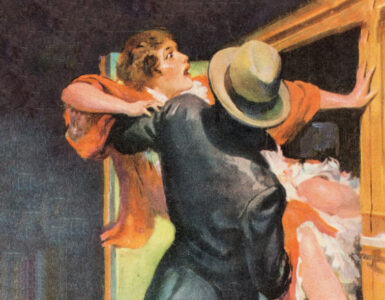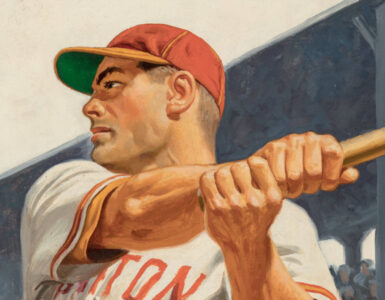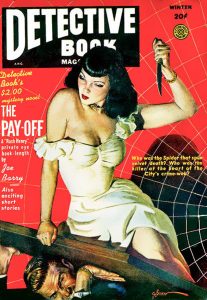 On Friday, August 5, PulpFest 50 continues its salute to the centennial of Fiction House, the pulp magazine and comic book publisher that gave us Action Stories, Cowgirl Romances, Fight Comics, Jumbo Comics, Jungle Stories, Lariat Story Magazine, North•West Romances, Planet Stories, Rangers Comics, Sheena, Queen of the Jungle, Wambi, Jungle Boy, Wings, and many other classic titles.
On Friday, August 5, PulpFest 50 continues its salute to the centennial of Fiction House, the pulp magazine and comic book publisher that gave us Action Stories, Cowgirl Romances, Fight Comics, Jumbo Comics, Jungle Stories, Lariat Story Magazine, North•West Romances, Planet Stories, Rangers Comics, Sheena, Queen of the Jungle, Wambi, Jungle Boy, Wings, and many other classic titles.
Beginning at 7 PM, we hope you’ll join PulpFest 50 as we welcome Bob Deis & Wyatt Doyle for “George Gross — From Pulps to Paperbacks,” a look at one of the leading artists for the Fiction House chain of pulp magazines.
George Gross was born on February 16, 1909, to Jewish immigrants from Hungary. Settling in New York City, first on the Lower East Side and later in Brooklyn, George’s father was a successful fashion industry artist who had studied at the Pratt Institute.
George and his younger siblings — Arthur and Beatrice — likewise studied at Pratt and joined their father’s studio. According to pulp historian David Saunders, pulp artists Rudolph Belarski, Frederick Blakeslee, and Harold Winfield Scott were among George’s instructors at Pratt.
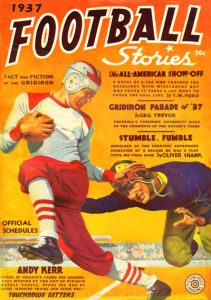 In 1934, George Gross sold his first pulp magazine paintings to Louis Silberkleit’s Winford Publications. From 1934 through mid-1937, most of his cover art was done for Silberkleit. His paintings were featured on Complete Northwest Novel Magazine, Double Action Western, Mystery Novels Magazine, and Real Western.
In 1934, George Gross sold his first pulp magazine paintings to Louis Silberkleit’s Winford Publications. From 1934 through mid-1937, most of his cover art was done for Silberkleit. His paintings were featured on Complete Northwest Novel Magazine, Double Action Western, Mystery Novels Magazine, and Real Western.
In late 1937, Gross began his long association with Fiction House. His first known pulp magazine cover for the publisher can be found on Football Stories for Fall 1937, the first and longest-lived of the publisher’s three football pulps. It ran for a total of 25 issues.
Although he also sold freelance covers to A. A. Wyn’s Magazine Publishers and the Street & Smith pulp chain, Gross’s bread and butter was earned largely through Fiction House. He painted countless covers for T. T. Scott’s line of magazines, including Action Stories, Air Stories, Baseball Stories, Detective Book Magazine, Fight Stories, Football Stories, Illustrated Football Annual, Jungle Stories, Lariat Story Magazine, North•West Romances, Planet Stories, Two Complete Detective Books, and Wings. Gross was, by far, the lead artist for the Fiction House sports pulps and Jungle Stories, painting the vast majority of the cover art used for those magazines. He also painted many covers for the publisher’s detective pulps.
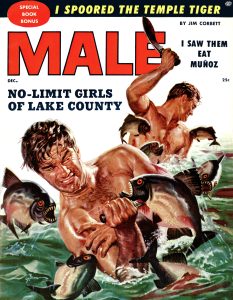 With the pulp magazine industry increasingly on the ropes after the Second World War, George Gross increasingly turned to the growing paperback book industry, selling cover paintings to Ace, Bantam, Berkley Books, Cameo Books, Dell, Lion Books, Phantom Books, Quarter Books, Star Books, Venus Books, and other publishers. Throughout the 1950s and ’60s, Gross also worked for the true-crime and men’s adventure magazines, selling cover art to Action For Men, Adventure, Argosy, Best True Fact Detective, Bluebook for Men, Cavalcade, Line-Up Detective Cases, Male, Man’s Conquest, Man’s Illustrated, Man’s World, Real, Saga, See, Showgirls, Special Detective, Stag, True Adventures, True Crime Cases, and Women in Crime.
With the pulp magazine industry increasingly on the ropes after the Second World War, George Gross increasingly turned to the growing paperback book industry, selling cover paintings to Ace, Bantam, Berkley Books, Cameo Books, Dell, Lion Books, Phantom Books, Quarter Books, Star Books, Venus Books, and other publishers. Throughout the 1950s and ’60s, Gross also worked for the true-crime and men’s adventure magazines, selling cover art to Action For Men, Adventure, Argosy, Best True Fact Detective, Bluebook for Men, Cavalcade, Line-Up Detective Cases, Male, Man’s Conquest, Man’s Illustrated, Man’s World, Real, Saga, See, Showgirls, Special Detective, Stag, True Adventures, True Crime Cases, and Women in Crime.
As time moved on and more of his markets dried up, Gross returned to his pulp roots. During the 1960s and ’70s, the artist painted countless western paperback covers. From the late sixties through the 1980s, he also painted covers for the Nick Carter — Killmaster series of paperbacks that were published by Ace Charter and Jove Books.
Originally featured in dime novels and story papers published by Street & Smith, Nick Carter was revived in 1933 and featured in Nick Carter Magazine, a detective hero pulp published by Street & Smith through the end of 1935. Award Books relaunched the character in 1964 as a secret agent in the mold of Ian Fleming’s James Bond. Written pseudonymously by a variety of authors including Michael Avallone, Dennis Lynds, Robert Randisi, and Martin Cruz Smith, there were more than 260 Nick Carter — Killmaster novels published through 1990.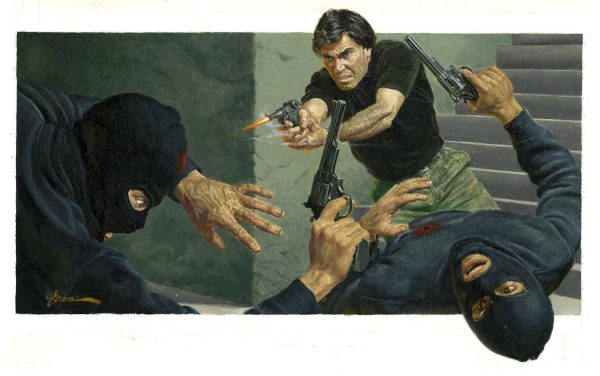
Gross also painted some of the Mack Bolan — The Executioner novels during the same period. The series was created by Don Pendleton.
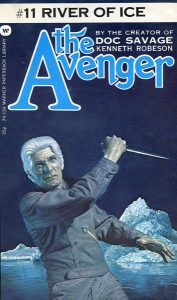 In 1973, beginning with Tuned for Murder — volume 9 in Warner Paperback Library’s series reprinting Paul Ernst’s Avenger novels, originally published by Street & Smith — George Gross painted the final sixteen volumes of the original series, as well as the twelve new adventures written by Ron Goulart. Both Ernst’s and Goulart’s stories were published under the Street & Smith house name of Kenneth Robeson.
In 1973, beginning with Tuned for Murder — volume 9 in Warner Paperback Library’s series reprinting Paul Ernst’s Avenger novels, originally published by Street & Smith — George Gross painted the final sixteen volumes of the original series, as well as the twelve new adventures written by Ron Goulart. Both Ernst’s and Goulart’s stories were published under the Street & Smith house name of Kenneth Robeson.
George Gross used Steve Holland as his model for The Avenger. His covers for the Warner series were also done in the realistic style that was used by James Bama for his Doc Savage covers for Bantam Books.
Unlike his friend and protégé, Mort Künstler, George Gross remained a commercial artist for his entire career. He retired from the field in 1984 at the age of 75. He died in 2003.
“George Gross — From Pulps to Paperbacks” will be presented by Bob Deis and his Men’s Adventure Library partner, Wyatt Doyle. Bob has worked as a teacher, an artist, a musician, a logger, a magazine writer, and a state government bureaucrat. By accident, he fell into a lengthy career as a political consultant. Now retired, Bob spends much of his time collecting, writing, and publishing books about the men’s adventure magazines.
In 2009, Bob created MensPulpMags.com, the popular website about the genre. Several years later, Bob and Wyatt Doyle launched the Men’s Adventure Library. In 2021, Bob and Bill Cunningham of Pulp 2.0 Press debuted a new magazine that features men’s adventure stories and artwork. Entitled Men’s Adventure Quarterly, it’s available through MensPulpMags.com, Amazon, and other booksellers.
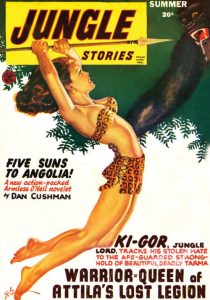 Wyatt Doyle is a writer, designer, publisher, musician, and photographer from Pennsylvania. For two decades, he earned a living in the Los Angeles film and television industry. He launched New Texture in 2006 and edits and designs most of its publications. He assisted Georgina Spelvin in the publication of her memoir, The Devil Made Me Do It, and served as editor and publisher of Black Cracker, by writer and guitarist Josh Alan Friedman. He curates the New Texture website and Reverend Raymond Branch’s RevBranch.com.
Wyatt Doyle is a writer, designer, publisher, musician, and photographer from Pennsylvania. For two decades, he earned a living in the Los Angeles film and television industry. He launched New Texture in 2006 and edits and designs most of its publications. He assisted Georgina Spelvin in the publication of her memoir, The Devil Made Me Do It, and served as editor and publisher of Black Cracker, by writer and guitarist Josh Alan Friedman. He curates the New Texture website and Reverend Raymond Branch’s RevBranch.com.
Wyatt’s original screenplay with Jason Cuadrado, I’m Here for You, was filmed as Devil May Call in 2013. Last year, his first solo photography exhibition, “And the red death held sway over the dollar store,” was held at Gallery 30 South, in Pasadena’s Green Street Village Landmark District. Wyatt also performs with the Stanley J. Zappa Quartet.
Together, Bob and Wyatt co-edit the Men’s Adventure Library which collects classic stories and artwork from the men’s adventure magazines. Their books include Weasels Ripped My Flesh!; A Handful of Hell: Classic War and Adventure Stories; Pollen’s Women: The Art of Samson Pollen; One Man Army: The Action Paperback Art of Gil Cohen; Mort Künstler: The Godfather of Pulp Fiction Illustrators; Exotic Adventures of Robert Silverberg; Maneaters: Killer Sharks in Men’s Adventure Magazines; and other titles. Their forthcoming releases include George Gross: Covered and Pollen in Print: 1955 – 1959.
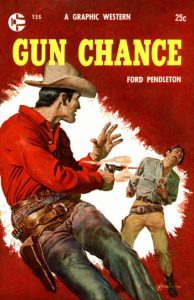 Both Wyatt and Bob have been presenting annually at PulpFest since 2018.
Both Wyatt and Bob have been presenting annually at PulpFest since 2018.
The general public is welcome to attend our evening programming events. To learn more about our schedule, please click the Programming button at the top of this page.
To enjoy our dealers’ room, join PulpFest 50 by clicking the Registration button at the top of this page. And don’t forget to book a room at the DoubleTree by Hilton Pittsburgh — Cranberry in Mars, Pennsylvania. They’re going fast!
Although he sold his first cover paintings to Louis Silberkleit’s Winford Publications, George Gross became a mainstay at Fiction House, beginning in 1937. He worked in a variety of genres for the pulp magazine publisher, including aviation, detective, jungle fiction, science fiction, sports, and westerns.
Pictured above are covers by George Gross for Detective Book Magazine for Winter 1949, Football Stories for Fall 1937, and Jungle Stories for Summer 1947, all published by Fiction House. In 2006, Asimov’s Science Fiction would reprint one of Gross’s Jungle Stories covers for their annual double issue.
Following the Second World War, Gross turned to other outlets for his work. He painted covers for paperbacks, the men’s adventure magazines, and true crime magazines. Our featured image is excerpted from the artist’s original cover painting for Women in Crime, dated March 1948 and published by the Hanro Corporation of New York City. Also pictured above are covers by George Gross for Male for December 1955 and Gun Chance, by Ford Pendleton, published in 1957 by Graphic Publishing.
Ford Pendleton was a pseudonym of western writer Gifford Paul Cheshire. The author got his start in the western pulps with most of his work being published between 1944 and 1956. He lived in Oregon and published twenty-nine western novels between 1954 and 1967. Cheshire wrote four westerns as Pendleton — Gun Chance, Gunmaster, Hell Rider, and Outlaw Justice — all published by Graphic during the mid-1950s.
In the later years of his commercial art career, George Gross returned to his pulp roots, painting paperback covers featuring Nick Carter — a dime novel and story paper detective from the late 1800s who gained his own pulp magazine from 1933 through 1935 — and The Avenger — a pulp hero introduced in 1939 by Street & Smith Publications. The original series ran for 24 issues, ending with its September 1942 number.
Pictured above are covers by George Gross for Nick Carter — Killmaster #231 — Night of the Condor, published in 1987 by Jove Books, and The Avenger #11, River of Ice, by Paul Ernst (as Kenneth Robeson), published April 1973 by Warner Paperback Library. Ernst’s story was originally published by Street & Smith in The Avenger for July 1940.
Many thanks to Heritage Auctions for the images of George Gross’s original artwork for Women in Crime and Night of the Condor. Thanks are also extended to David Saunders and Diego Cordoba whose profiles of George Gross in Illustration Magazine #66 (November 2019) and illustrators #37 (Spring 2022) were very helpful in preparing this post.


